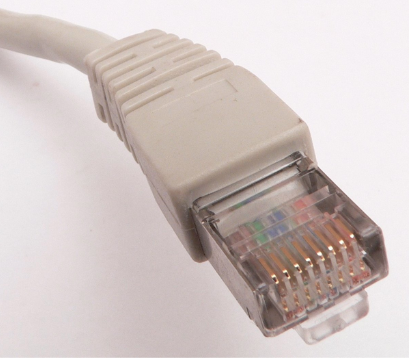Packet radio on VHF (AX.25) is largely the same today as it was in the 1980s, but with ubiquitous, small form-factor computing cheaply available, the possibilities for deploying packet equipment are more flexible and inexpensive than they’ve ever been.
View the 📼 video introduction presented by KF7HVM at LCARA presentation night Feb 2022.
Read the VARA+direwolf Hybrid Packet guide
Radio
The radio makes up the physical layer of the stack and there are hundreds of variations possible. Typically I recommend using whatever gear is available at hand, or cheaply.
If one is intent on buying new equipment, I recommend the following:
- Alinco DR-135T
- The standard DB9 (RS232) connector exposes 1200/9600 baud audio, PTT, and COS at the back of the radio making this model very easy to interface with a variety of equipment.
- Kenwood TM-V71a
- The standard 6-pin DIN connector exposes 1200/9600 baud audio, PTT, and COS using a cable and pinout that is extremely common and interoperable.
- HG-98UV
- An inexpensive handheld with APRS, GPS, and Bluetooth KISS functinoality. Still need to determine if connected mode packet is possible with this unit, but certainly APRS is working. Also supports custom firmware, so capabilities missing today may arrive tomorrow.
When selecting a radio for packet use, prefer a dedicated DATA port 👈:
- typically exposes discriminator audio without de-emphasis and regardless of squelch state (needed for 9600 baud)
- typically exposes COS (squelch detect) which is important when acting as a packet server
- allows the use of the MIC and speaker on the radio for increased operating flexibility
Interface
The interface provides a bridge between the computer and the radio. In the past, the interface was often a “full TNC” which performed packet↔audio encode/decode (modem) and provided a serial interface to the PC. More modern configurations use a software modem, like direwolf, coupled with a commodity soundcard.
There are three types of interfaces used in my station:
- USB Soundcard + On-board GPIO: Cheap and easy solution for single board computers such as Raspberry Pi.
- Use a ~$5 soundcard from your favorite electronics retailer.
- Use 2 pins from the GPIO header to provide PTT and ground (use a third for COS if desired)
- Create a custom cable (see below) that integrates audio and PTT for the target radio.
- DRA-34: Assembled and tested $69
- Provides a fully integrated soundcard + PTT (supported by direwolf)
- Exposes an RJ-45 interface with (RX, TX, PTT). Very easy to terminate RJ-45 with the correct tools
- Create a custom cable that converts from the radio’s native DATA port to the standard RJ-45 pinout
- Signalink USB: Device with cable kit ~$150
- Most expensive option, but fully plug and play due to integrated VOX circuit.
- Extensive pre-fab cable collection if you don’t want to make your own.
The Cable

Out of TRRS, 6-pin miniDIN, and DE-9, I’ve found 8P8C Modular Connector (“RJ-45”) ends are the simplest to construct, cheapest, and most universal connector for TNCs. Buying a modular connector crimp tool to build TNC interface cables is a good investment for such common connectors. Other special ends can be purchased as pre-made cables and adapters can be paired with simple RJ-45 couplers.
See TNC Cables for detailed information
Client Software
direwolf - Modem
Cross-platform AX.25 “soundcard” modem. Basic TNC features include digipeater, beaconing, and APRS-IS capabilities.
YAAC - APRS
Cross-platform feature-rich APRS client with offline mapping.
Windows Installation Note: use Java 11, create shortcut: java -jar C:\Users\Ham\Downloads\YAAC\YAAC.jar.
pat - Winlink
Cross-platform open-source Winlink client, supporting forms and peer-to-peer messaging.
PC Hardware
 Current recommendation is Raspberry Pi 3B or 4B or
refurbished chromebook.
Current recommendation is Raspberry Pi 3B or 4B or
refurbished chromebook.
